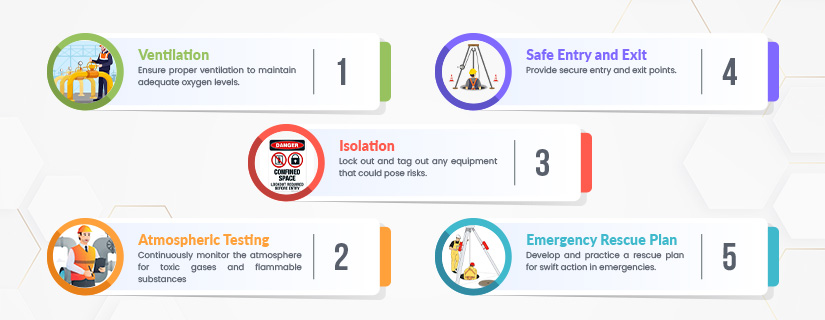Confined spaces can present a number of unique challenges and hazards. Workers and employers should be aware of the risks associated with enclosed spaces and the safety measures that must be taken to ensure their safety.
We will also discuss the crucial preparations required for entry, the methods employed to control hazards, and additional safety precautions that are essential. Let’s explore these crucial insights to enhance your understanding of confined space safety.
What is Confined Space?
The term “confined space” refers to an area not designed for continuous human activity and with limited entry and exit points. These spaces can vary in size and shape but often share common characteristics such as restricted access, limited ventilation, and the potential for hazardous atmospheres.
Examples of Confined Space
Confined spaces can be found in a wide range of industries and settings, including:
- Industrial Plants: Tanks, vessels, and silos.
- Construction Sites: Trenches, pits, and tunnels.
- Agriculture: Grain bins and manure pits.
- Utilities: Sewers, pump stations, and utility vaults.
Confined Space Hazards at Work:
A range of potential hazards are exposed to individuals working in confined spaces. The most common of these include oxygen deficiency, toxic gases, flammable atmospheres, physical entrapment, and psychological stress. The confined nature of these spaces enhances the risk of exposure to such hazards
“Smart workers will always comply with confined space entry rules.”
Precaution Steps to Control Hazard in Confined Space


5 Reasons Why Confined space training is so important?
- A confined space training program raises workers’ awareness of confined space definitions and potential hazards, which eventually reduces injuries and saves lives.
- A confined space training program can help managers and organizations assess risks, select suitable safety equipment, and establish emergency protocols, safeguarding workers and enabling effective monitoring throughout the operation. It is an essential tool for comprehensive workplace safety and risk management.
- Workers in the confined space industry are trained in atmosphere testing and are equipped with the knowledge and tools needed to ensure the safety of their operations. Having a basic understanding of the space will increase their confidence, enabling them to enter, work, and exit safely.
- A confined space training course will emphasize both the legal requirements that companies must satisfy in order for employees to work in confined spaces to have the necessary qualifications and certifications.
- Training in confined spaces is important not only for businesses but for individuals as well. Any person working in a tight or cramped space will benefit from this course. Whether you are in the construction industry, the public sector, or any other field that involves working in confined spaces, this training is essential.
“Knowing safe procedures about confined space Is a must in the workplace.”
Conclusion
A comprehensive training program is essential for workers preparing to enter confined spaces. It is essential that they possess the ability to identify potential hazards, understand the usage of equipment, and be proficient in the use of personal protective equipment.
An understanding of safe work procedures, emergency protocols, and the nature of the task in a confined space is essential. The primary objective of these spaces must be to prioritize safety and avoid compromising human life. Unless this training is received, the risks of serious injury rise, which underscores the critical importance of workplace safety, especially in confined spaces.





